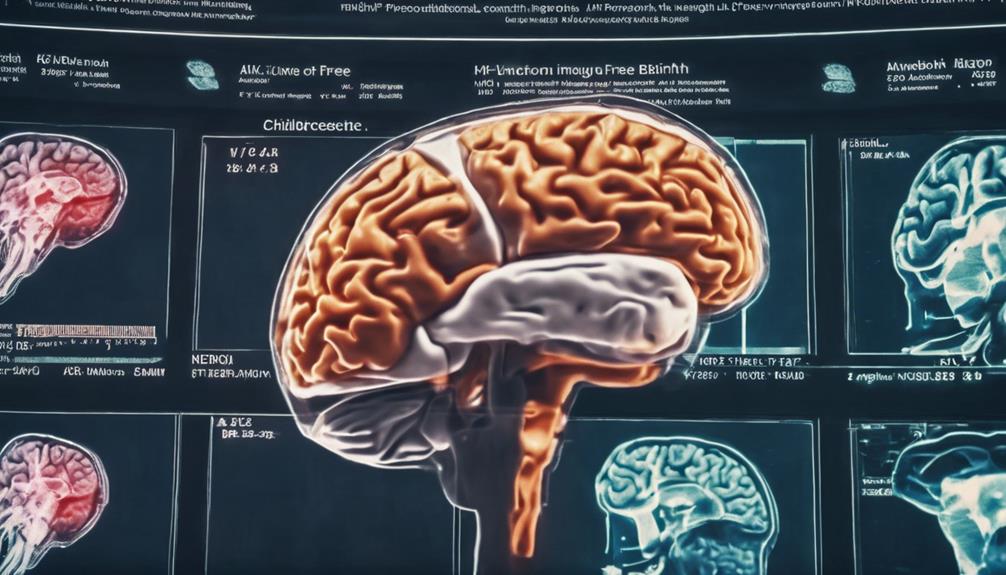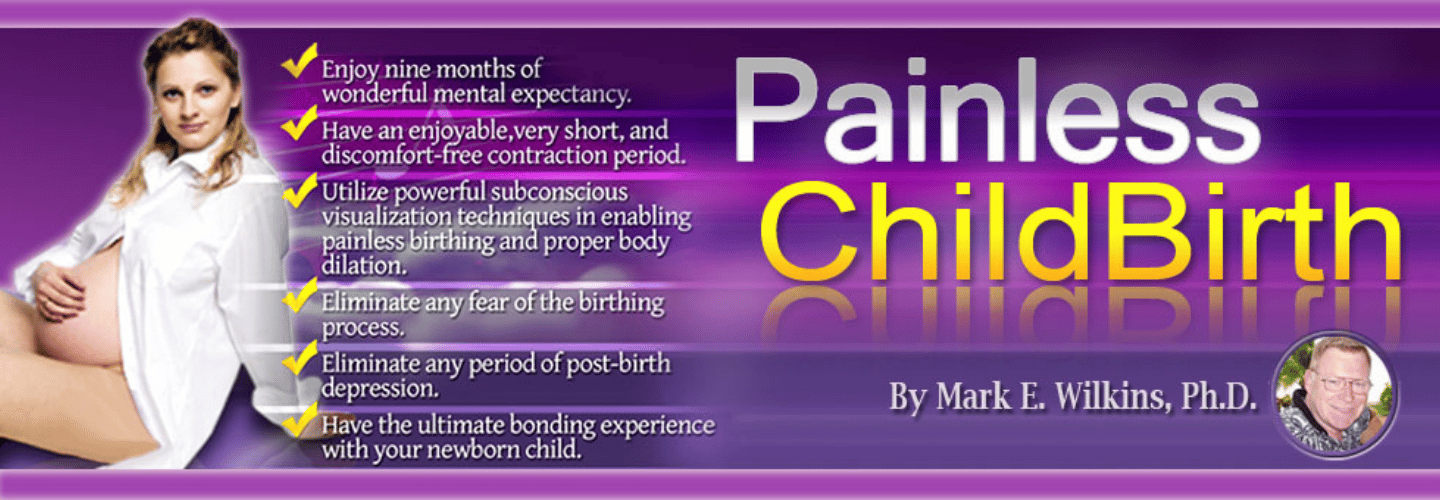
The journey of pain-free childbirth hypnosis unfolds as a fascinating narrative, blending historical insights with modern scientific advancements to revolutionize the childbirth experience. From its humble beginnings in the USSR to the groundbreaking work of Fernand Lamaze and the subsequent integration of mindfulness and breathing techniques, the evolution of childbirth hypnosis paints a compelling picture of empowerment and transformation. As we navigate through the intricate web of clinical applications, neuro-imaging evidence, and future potentials, the allure of this age-old practice in modern obstetrics continues to intrigue and inspire, beckoning us to explore its depths further.
Historical Roots of Childbirth Hypnosis
Revealing the historical origins of childbirth hypnosis uncovers a transformative journey that began in the USSR and flourished under the pioneering work of Fernand Lamaze in 1950s France. The approach challenged traditional views on labor pain by emphasizing mindfulness, breathing exercises, and education. Despite initial political resistance, influenced by Communist ideals promoting painless delivery, the method gained traction in Europe. This approach was endorsed by Pope Pius XII but faced criticism from psychoanalysts and feminists. Pain-free childbirth techniques were taught to midwives and expectant mothers, experiencing a resurgence in popularity in the 21st century.
The roots of childbirth hypnosis highlight a shift towards empowering women during labor through mental techniques and relaxation strategies. By combining hypnosis with mindful practices, Lamaze revolutionized the childbirth experience, paving the way for a more holistic approach to delivery. The historical journey underscores the enduring impact of pain-free childbirth methods, which continue to evolve and adapt in modern maternity care.
Scientific Understanding of Hypnosis Mechanisms
Hypnosis is a state involving heightened suggestibility and altered consciousness. It has been the subject of scientific scrutiny during childbirth. Understanding the mechanisms behind hypnosis, including brain activity and the effects of hypnotic suggestions, is essential to harness its potential in pain management during labor.
Hypnosis Brain Activity
Studies in neuro-imaging have provided valuable insights into the specific brain regions involved in the mechanisms underlying hypnosis-induced pain relief. Hypnosis impacts brain activity related to pain perception, reducing anxiety, fear, and muscular tension during childbirth. The level of hypnotisability varies among individuals, influencing the effectiveness of pain relief through hypnosis.
Additionally, hypnosis enhances mood, control, and coping abilities, offering significant benefits during labor. Understanding the neural correlates of hypnosis in pain management is essential for optimizing childbirth hypnosis techniques. By targeting these brain regions, practitioners can further improve pain relief, anxiety reduction, and overall childbirth experience through hypnosis.
This scientific understanding paves the way for more effective and personalized approaches in utilizing hypnosis for childbirth.
Hypnotic Suggestion Effects
Exploring the impact of hypnotic suggestion effects on pain management during childbirth reveals a fascinating interplay between altered conscious awareness and enhanced responsiveness to suggestions. Neuro-imaging studies have demonstrated that hypnosis induces changes in brain activity, contributing to pain relief.
By reducing anxiety, fear, and muscular tension, hypnosis creates a conducive environment for pain management during labor. Individual variances in hypnotizability influence the effectiveness of hypnosis in pain reduction.
Through a narrowed focus and heightened responsiveness to suggestions, hypnosis alters perceptions of pain and conscious awareness. These mechanisms underpin the efficacy of hypnosis interventions in childbirth, emphasizing the importance of understanding how hypnotic suggestion effects can positively impact women's experiences of labor pain.
Clinical Applications in Pain Management

Clinical applications of hypnosis in pain management during childbirth offer a holistic approach to pain relief.
This approach focuses on techniques that enhance patient comfort and well-being.
The therapeutic benefits of hypnosis encompass not only physical relief but also emotional support.
This support promotes a positive childbirth experience.
Pain Relief Techniques
Hypnosis, a proven clinical technique, offers a powerful method for pain relief in childbirth by enhancing mood, control, and reducing the reliance on pharmacological interventions. Studies show that hypnosis alters conscious awareness, reducing anxiety, fear, and muscular tension during labour.
The effectiveness of hypnosis in pain management varies based on individual hypnotisability. By focusing on enhancing coping mechanisms through altered perceptions and mood enhancement, hypnosis provides a natural approach to pain relief.
Neuro-imaging studies illustrate physiological changes during hypnosis that support its efficacy. In childbirth, hypnosis can empower women to manage pain without the need for high levels of pharmacological pain relief, showcasing its potential as a valuable tool in pain management strategies.
Patient Comfort Strategies
How can patient comfort strategies in pain management enhance the childbirth experience through non-pharmacological interventions like hypnosis?
Patient comfort strategies, including hypnosis for pain management, focus on utilizing non-pharmacological techniques such as relaxation, focused attention, and suggestion to reduce pain perception and improve coping mechanisms during labor.
By incorporating hypnosis, anxiety, fear, and muscular tension can be decreased while fostering a sense of control and well-being in expectant mothers.
These individualized care approaches prioritize maternal well-being and emphasize holistic methods over pharmacological pain relief options, ensuring a safer and more personalized birthing experience.
Patient comfort strategies like hypnosis play a crucial role in enhancing childbirth experiences by offering alternative pain management techniques that promote a positive and empowering journey into motherhood.
Therapeutic Hypnosis Benefits
Patient comfort strategies such as therapeutic hypnosis offer a multifaceted approach to pain management that extends beyond traditional pharmacological interventions, enhancing overall well-being and coping mechanisms in various medical contexts.
In the context of labor, research shows that women who used hypnosis reported less pain during labor, increased satisfaction with pain relief methods, and an overall positive childbirth experience. The hypnosis group stayed more relaxed and coped better with labor compared to those solely relying on pharmacological pain management.
Additionally, hypnosis for labor is not only effective for pain relief but also aids in promoting relaxation and reducing anxiety levels. Its benefits extend beyond childbirth, showcasing its versatility in improving coping mechanisms and enhancing well-being in various clinical settings.
Neuro-Imaging Evidence Supporting Hypnosis Efficacy

Demonstrating physiological changes through neuro-imaging studies provides compelling evidence for the efficacy of hypnosis in alleviating pain during childbirth. These studies reveal how hypnosis induces pain relief by reducing anxiety, fear, and muscular tension while enhancing mood and the sense of control in expectant mothers.
The variation in hypnotisability among individuals plays an important role in determining the effectiveness of pain management through hypnosis. During hypnosis, individuals experience a narrowed focus, decreased awareness of external stimuli, and heightened responsiveness to suggestions, all contributing to the observed physiological changes.
The alterations in brain activity and connectivity observed during hypnosis suggest a potential mechanism for pain management during labor, shedding light on the neurological underpinnings of this alternative approach. By understanding the neural correlates of hypnosis-induced pain relief, healthcare providers can further explore its integration into childbirth practices for improved maternal well-being.
Comparison With Pharmacological Pain Relief Methods
In the domain of childbirth pain management, the comparison between hypnosis and pharmacological methods reveals intriguing insights into their respective effectiveness and utilization. Studies indicate that hypnosis during childbirth may lead to a reduction in the overall use of analgesia compared to pharmacological pain relief methods. While hypnosis has been associated with fewer women opting for pain relief medication, it does not notably impact epidural use.
Hypnosis interventions work towards managing labour pain by inducing altered conscious awareness and increasing responsiveness to suggestions. Safety concerns surrounding pharmacological pain management methods emphasize the importance of exploring non-pharmacological options such as hypnosis for pain relief during childbirth. Hypnosis shows promise in not only reducing anxiety, fear, and enhancing mood but also in providing a sense of control during the birthing process.
Therefore, the integration of hypnosis into pain management strategies for childbirth presents a compelling avenue for expecting mothers seeking alternatives to traditional pharmacological approaches.
Integration With Non-Pharmacological Pain Management

When considering non-pharmacological pain management strategies for childbirth, the integration of hypnosis stands out as a compelling and effective approach. Hypnosis interventions target reducing anxiety, fear, and muscular tension during labor, enhancing women's mood and sense of control.
Here are four key reasons why hypnosis integration in non-pharmacological pain management for childbirth is remarkable:
- Reduced Analgesia Usage: Hypnosis has been shown to decrease the overall use of analgesia during labor, providing a potential safe and effective alternative to pharmacological pain relief methods.
- Impact on Pain Perception: Hypnosis focuses on altering perceptions of pain, promoting relaxation, and reframing pain as a manageable experience during childbirth.
- Enhanced Mood and Control: By reducing anxiety and fear, hypnosis can enhance women's emotional well-being and sense of control during the birthing process.
- Decreased Pharmacological Dependency: Studies indicate that hypnosis may lead to fewer women opting for pain relief medication, highlighting its role in reducing pharmacological dependency during childbirth.
Challenges and Limitations in Research
Exploring the landscape of research on hypnosis for pain management during childbirth reveals a series of challenges and limitations that researchers encounter. The subjective nature of pain perception poses a significant obstacle in evaluating the effectiveness of hypnosis interventions for pain relief during labor. This effectiveness varies among individuals depending on their level of hypnotisability, further complicating the assessment process.
Despite the growing interest in utilizing hypnosis for pain management in childbirth, there is a lack of high-quality evidence to definitively establish its benefits. Understanding the impact of hypnosis on pain relief satisfaction and coping mechanisms during labor necessitates more in-depth investigation to provide conclusive results.
Recent trials have made strides in improving bias assessment in research on hypnosis for pain-free childbirth, enhancing the validity and reliability of study findings. Overcoming these challenges and limitations is essential to advancing the field and maximizing the potential of hypnosis in improving childbirth experiences.
Future Directions and Potential Advancements

Future research endeavors will focus on optimizing hypnosis protocols to enhance pain management during childbirth. This optimization can lead to more effective pain relief and improved patient outcomes. To achieve this, researchers may explore innovative approaches and techniques, such as utilizing neuroimaging techniques to understand the brain mechanisms involved in hypnosis-induced pain relief.
Tailoring hypnosis interventions to individual needs and preferences is also essential for maximizing their efficacy in achieving pain-free childbirth. Collaborative efforts between hypnotherapists, obstetricians, and researchers will be vital in developing and implementing these individualized interventions. Additionally, continued education and training programs for healthcare providers on hypnosis techniques for pain management in childbirth can enhance the quality of care provided to expectant mothers.
Frequently Asked Questions
Can Hypnosis Reduce Pain in Childbirth?
Hypnosis is increasingly recognized for its benefits in pain management during childbirth. This technique offers a holistic approach to labor comfort by altering pain perception, enhancing relaxation, and fostering a mind-body connection.
Studies indicate hypnosis may reduce the need for pharmacological pain relief, promoting a positive birthing experience.
Hypnotherapy research supports its efficacy in pain relief strategies, highlighting the potential of hypnobirthing as a successful childbirth technique.
What Is the Evolutionary Reason for Painful Childbirth?
The evolutionary reason for painful childbirth is rooted in the concept of evolutionary adaptation. The sensation of pain during childbirth has been theorized to have served as a mechanism to promote maternal investment and secure the survival of offspring. This experience, tied to biological processes, has been a common occurrence across cultures throughout history.
While modern advancements offer various pain management techniques, the evolutionary significance of painful childbirth continues to be a subject of interest in understanding the maternal experience.
Is It Possible to Give Birth Without Pain?
It is possible to give birth without pain by utilizing various pain management techniques. These include hypnosis techniques, mind-body connection practices, labor preparation, breathing exercises, visualization methods, relaxation techniques, positive affirmations, coping strategies, and fear release.
These methods aim to reduce anxiety, fear, and muscular tension during labor, enhancing mood, pain control, and comfort during childbirth. Individual hypnotisability can impact the effectiveness of these strategies in achieving a more comfortable labor experience.
Why Do I Touch Myself During Labor?
During labor, touching oneself can serve as a self-soothing technique that taps into the mind-body connection. It offers comfort, triggers the relaxation response, and aids in pain management.
This coping strategy empowers individuals, allowing for emotional release, heightened sensory awareness, and inner guidance. Through self-touch, individuals find a sense of control and utilize their body's natural abilities to navigate the intense experience of childbirth.
Conclusion
To sum up, the evolution of pain-free childbirth hypnosis is akin to a blooming flower, with its historical roots deepening and scientific understanding blossoming.
Clinical applications and neuro-imaging evidence provide a foundation for its efficacy, standing tall amidst the comparisons with pharmacological methods.
Challenges and limitations may cast shadows, but the future holds potential advancements like rays of sunlight breaking through the clouds, illuminating a path towards improved pain management in childbirth.




